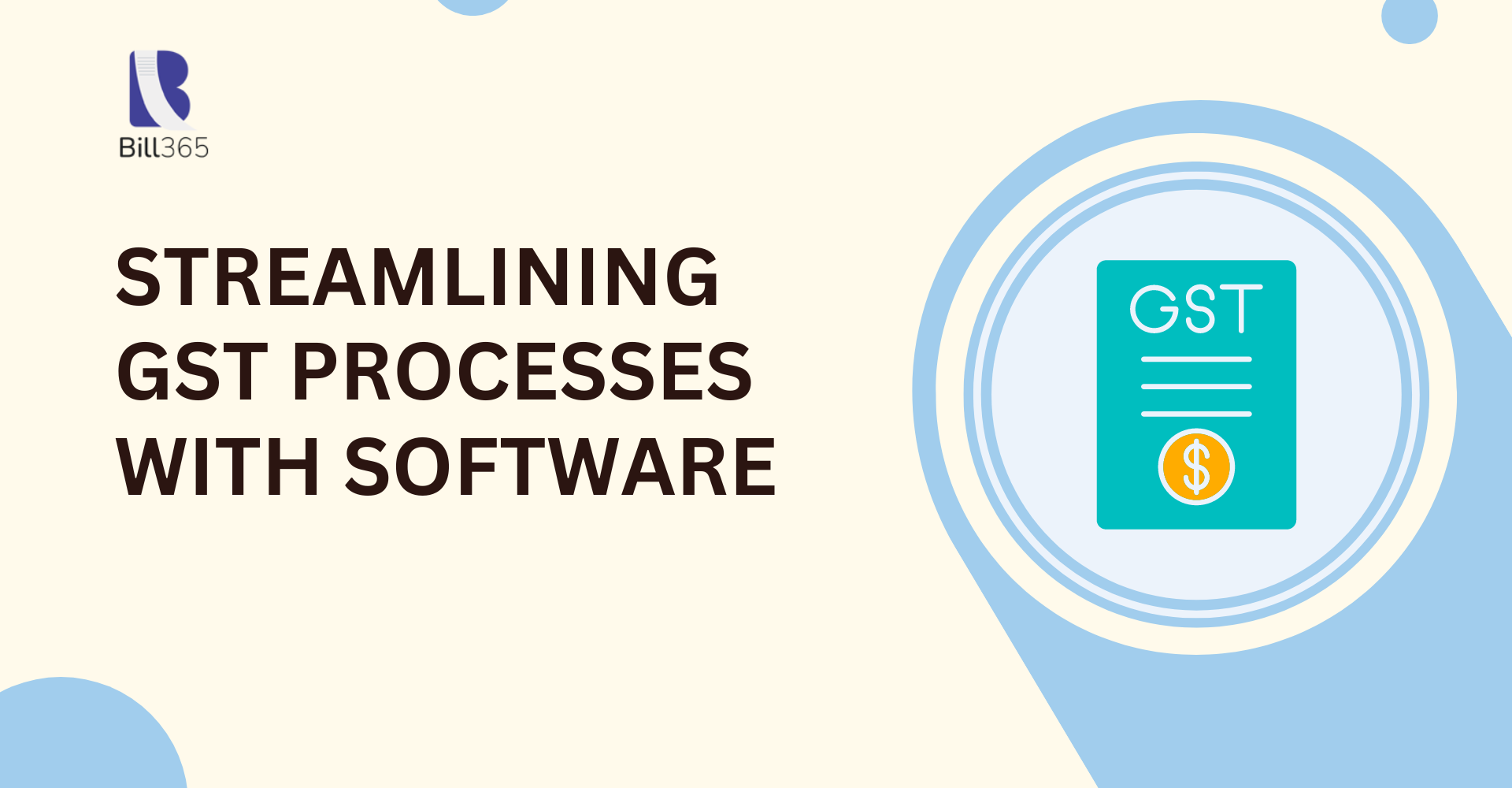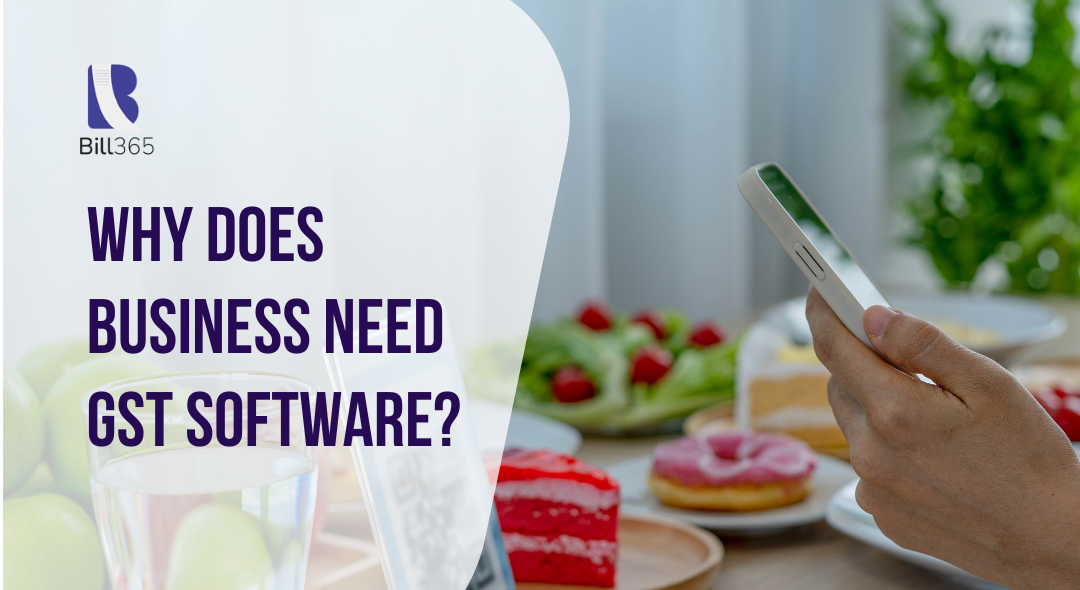
Tips for Streamlining GST Processes with Software
Managing Goods and Services Tax (GST) can be a time-consuming process for businesses, especially with the frequent updates in tax regulations. However, the right software can help streamline these tasks, making tax management more efficient and less prone to errors. Tips for Streamlining GST processes with software can guide businesses in automating key functions like invoice generation, tax calculations, and return filings, helping them maintain accuracy and ensure timely compliance.
By integrating GST software, businesses can reduce manual effort, minimize errors, and stay updated with changing tax rules. The software simplifies complex tax structures, provides real-time data access, and ensures compliance with government regulations. From automating the creation of invoices and tracking input credits to generating error-free reports, GST software helps businesses save time and resources. It can also enable smooth reconciliation of returns and faster claim of tax credits.
In this article, we will explore some essential tips for using GST software to optimize tax processes, boost productivity, and ensure a smoother experience with tax compliance, empowering businesses to focus more on growth and less on tax complexities.
Why Does Business Need GST Software?

Businesses today face the challenge of managing complex tax structures, especially under the Goods and Services Tax (GST) regime. Manually handling GST processes, such as tax calculations, invoice generation, and return filings, can be error-prone and time-consuming. This is where GST software becomes essential. GST software automates key tax functions, ensuring compliance, reducing manual errors, and saving valuable time for businesses. It helps streamline tax operations, providing real-time access to data, automating tax calculations, and ensuring accurate and timely filing of returns.
One of the primary reasons businesses need GST software is to maintain accuracy and ensure compliance with the ever-evolving GST regulations. The software keeps track of regulatory updates, ensuring that businesses always operate in line with the latest tax rules. This reduces the risk of penalties due to non-compliance or late filings. Additionally, GST software offers features like automated invoice generation, reconciliation of input tax credits, and easy tracking of sales and purchases, simplifying tax management.
Incorporating Tips for Streamlining GST Processes with Software can further optimize how businesses manage their GST obligations. By automating repetitive tasks like invoice generation and tax filing, businesses can focus on core activities rather than getting bogged down by administrative tax processes. With the right GST software, businesses can also generate error-free reports, making audits smoother and faster. This not only saves time but also enhances operational efficiency. In essence, GST software is a vital tool that enables businesses to stay compliant, reduce tax-related risks, and streamline their overall tax management processes, allowing them to focus on growth and profitability.
Top 10 Tips Streamling GST Processes with Software
Streamlining Goods and Services Tax (GST) processes with the right software is essential for businesses to improve efficiency, reduce errors, and ensure compliance with tax regulations. In this detailed guide, we’ll explore the Top 10 Tips for Streamlining GST Processes with Software, breaking down each step and explaining how businesses can leverage technology to optimize their GST management. These tips can help businesses save time, reduce operational costs, and simplify tax compliance.
1. Automate Invoice Generation
Manual invoicing can be a time-consuming and error-prone task, especially when handling large volumes of transactions. GST software automates the process of generating tax-compliant invoices by pre-configuring GST rates, tax codes, and other essential details. Automated invoicing not only speeds up the process but also ensures that invoices adhere to GST rules, reducing the risk of non-compliance. Businesses can also integrate their invoicing system with the accounting software for real-time data entry and reporting.
2. Seamless Return Filing
GST return filing is a recurring obligation for businesses, and errors in filing can result in penalties or legal complications. GST software simplifies the return filing process by automatically calculating the GST liability based on the invoices generated. The software keeps track of filing deadlines and prepares the returns in the correct format (GSTR-1, GSTR-3B, etc.), minimizing manual effort. This ensures timely submissions, preventing late fees, and making the entire process seamless.
3. Simplify Input Tax Credit (ITC) Reconciliation
One of the key benefits of GST is the availability of input tax credit, which allows businesses to reduce their tax liability by claiming credits for taxes paid on purchases. However, manual reconciliation of input tax credits can be complicated, requiring businesses to match purchase invoices with suppliers’ filed returns. GST software automates the reconciliation process by matching purchase data with GSTR-2A automatically, ensuring that businesses claim the maximum ITC without missing out due to mismatched or missing data.
4. Real-time Data Access
One of the most significant advantages of using GST software is the ability to access real-time financial data. Businesses can track their tax liabilities, input credits, and sales transactions in real-time, giving them a clearer understanding of their tax obligations. Real-time data access also enables businesses to make informed decisions regarding their cash flow and ensure they have the necessary funds to meet their tax obligations. Having a dashboard with real-time updates also reduces dependency on last-minute scrambling and tax preparation at the end of the filing period.
5. Customizable Tax Reports
GST software generates detailed tax reports that help businesses track their transactions and tax liabilities. These reports are essential during audits and help businesses maintain transparency with tax authorities. GST software allows users to generate customizable reports that provide insights into tax payments, refunds, pending returns, and much more. Custom reports can also help businesses prepare for audits and financial reviews, as the software makes it easy to compile and present accurate tax data quickly.
6. Error-free Tax Calculations
Calculating GST manually can be challenging due to the multiple tax rates applicable to different goods and services. GST software eliminates the chances of miscalculations by automating the entire process. The software calculates the correct GST amount based on the applicable rates, helping businesses avoid costly mistakes. Whether it’s CGST, SGST, or IGST, the software ensures that each type of tax is accurately calculated for each transaction, leaving no room for errors in tax returns or invoices.
7. Integration with Accounting Systems
For businesses to effectively manage their tax liabilities, it’s essential that their GST software integrates seamlessly with their existing accounting system. This integration ensures that sales, purchase, and inventory data are automatically transferred to the GST module for real-time tax calculations and return preparation. When GST software works in tandem with the accounting system, it simplifies processes like tax reconciliation, return filing, and input credit matching. This reduces manual data entry, which often leads to errors and delays in tax filings.
8. Stay Updated with GST Regulations
GST laws are subject to frequent changes, which can make compliance a moving target for businesses. With manual processes, keeping up with these changes can be difficult, but GST software is regularly updated with the latest GST rules and regulations. This ensures that businesses remain compliant without having to manually monitor regulatory updates. Automated updates in the software ensure that all calculations and returns align with the most current legal requirements, safeguarding businesses from unintentional non-compliance.
9. Simplify Multi-State and Multi-Branch Transactions
For businesses that operate in multiple states or have several branches, managing GST can become increasingly complex due to variations in tax rates across states. GST software simplifies the management of multi-state and multi-branch transactions by centralizing tax data and providing a consolidated view of tax liabilities across locations. The software ensures that state-specific taxes, such as SGST, are calculated correctly, reducing the administrative burden on the business. By consolidating tax data, businesses can file returns for multiple locations efficiently.
10. Facilitate Faster Tax Audits
GST software not only helps businesses stay compliant but also makes it easier to undergo tax audits. The software organizes all GST-related data, such as invoices, tax returns, and reconciliation reports, in one place. This reduces the time and effort required during an audit, as businesses can quickly generate the required documents and reports to share with tax authorities. In case of discrepancies, the software allows for easy identification and resolution of errors, further streamlining the audit process and minimizing the risk of penalties.
Conclusion
The implementation of GST software is crucial for businesses that want to manage their tax processes more efficiently. By automating various aspects of GST compliance—such as invoicing, return filing, and reconciliation—companies can reduce the administrative burden of tax management. Incorporating the Tips for Streamlining GST Processes with GST Billing Software discussed above will enable businesses to maintain accuracy, stay compliant, and enhance productivity.By following these 10 tips, businesses can effectively leverage GST software to transform their tax management processes and ensure a smoother, more efficient experience with GST compliance.
FAQs
1. Does GST apply to software?
Yes, GST applies to software in India. Software is categorized under two types: packaged software and customized software. Packaged software, often referred to as “off-the-shelf” software, is treated as a good and attracts GST at a rate of 18%. Customized software, which is developed based on client requirements, is considered a service and also falls under the 18% GST bracket. Whether purchased as a product or service, businesses must pay GST on software transactions, ensuring compliance with tax regulations.
2. What is the impact of GST on software industry in India?
The impact of GST on the software industry in India has been largely positive, streamlining the tax structure by replacing multiple indirect taxes with a single tax system. With an 18% GST rate applied uniformly to both packaged and customized software, the industry has experienced greater clarity in taxation. This has simplified compliance and reduced the tax burden associated with varying state-level taxes, such as VAT and service tax, under the previous regime. However, the uniform rate has increased costs slightly for end consumers, but overall, GST has enhanced ease of doing business and improved transparency in the software sector.
3. Why use GST software?
Using GST software simplifies and automates the complex processes involved in GST compliance, such as invoicing, return filing, and tax calculations. It reduces the risk of errors, ensures timely submissions, and helps businesses stay updated with the latest tax regulations. GST software also streamlines input tax credit reconciliation, offers real-time data access, and integrates with accounting systems, making tax management more efficient and error-free. Ultimately, it saves time, reduces administrative burdens, and ensures seamless compliance with GST laws.
